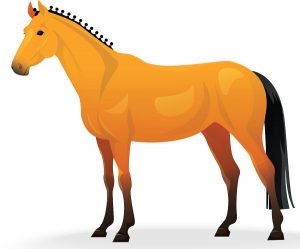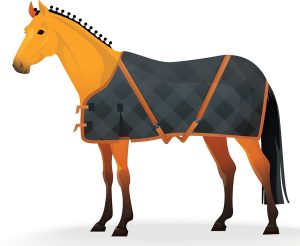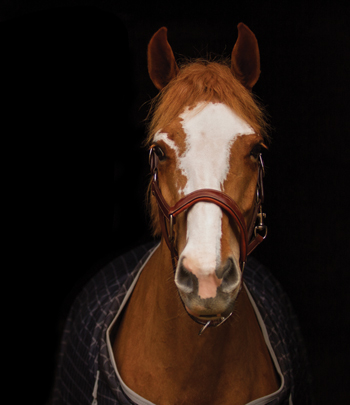 With this simple article on horse blanketing at a glance, learn when a horse needs a blanket, when it’s okay not to blanket, types of blankets, maintenance, and cautions for blanketing.
With this simple article on horse blanketing at a glance, learn when a horse needs a blanket, when it’s okay not to blanket, types of blankets, maintenance, and cautions for blanketing.
No Blanket
Yes, if:
◆ The horse has good body condition and is healthy overall;
◆ Is adapted to the local climate;
◆ Has a good winter coat; and
◆ Has access to shelter.
While temperature cut-offs may be region-specific, the general premise is the same. If any of those conditions are missing, then a blanket may be needed.
 Best to Blanket
Best to Blanket
◆ Performance and show horses that have sleek coats from clipping or lights;
◆ Senior horses with reduced ability to thermoregulate;
◆ In cold, wet conditions
Blanket Types
◆ Turnout Blankets: As the name implies, are meant to be used outside. They are waterproof and made of heavy-duty fabric, indicated by a denier number (the higher it is, the more sturdy).
◆ Stable Blankets: Meant to be worn inside, are not waterproof and are usually a lower denier.
◆ Lightweight Blankets: Without fill are often called sheets.
◆ Neck Covers: May be attached or removed from the blanket depending on whether they’re needed.
◆ Quarter Sheets: Used for warm-up and cool-down when working, keep the muscles of the hindquarters warm.
◆ Fleece or Wool Coolers: Wick moisture and prevent chills while cooling out or drying.

The “fill” of the blanket refers to grams or amount of fiber that is used to insulate the blanket, usually listed as light, medium or heavy weight. The colder the weather, the heavier the amount of fill needed. Fill weights for each category vary by manufacturer.
Maintenance
◆ Remove the blanket and check your horses regularly. Wounds and other issues, like weight loss, can be missed without routine inspection.
◆ Regularly make sure blankets are clean, dry, damage-free, and adjusted comfortably.
Caution!
 Yes, cozy is nice, but as the weather warms up, blankets can cause horses to sweat, which can lead to skin issues, as well as causing chills when the weather cools down again. Keep an eye on the weather forecast and be prepared to remove blankets or change to a lighter weight if necessary. When in doubt, opt for less blanket rather than too much.
Yes, cozy is nice, but as the weather warms up, blankets can cause horses to sweat, which can lead to skin issues, as well as causing chills when the weather cools down again. Keep an eye on the weather forecast and be prepared to remove blankets or change to a lighter weight if necessary. When in doubt, opt for less blanket rather than too much.
Sources: Carolyn (Carrie) Hammer, DVM, Ph. D., is the Director of Equine Science of North Dakota State University. Danielle Smarsh, Ph.D., is an Equine Extension Specialist and Assistant Professor of Equine Science at Pennsylvania State University.
This article about horse blanketing at a glance, along with an article on blanket fit for any horse, originally appeared in the November 2019 issue of Horse Illustrated magazine. Click here to subscribe!





